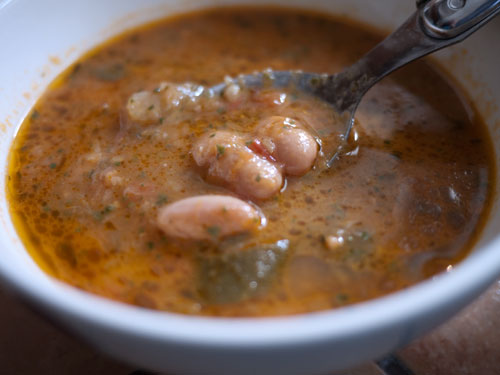
Recipes abound in print and online for Soupe au Pistou, a bean and vegetable soup that is a Provençal classic. Mine is not much different from the rest, but it's here because I love it so much. It reminds me of why I wanted to move here in the first place. When a pot of Soupe au Pistou is simmering away on our crappy hotplate (yes, it can be made on a hotplate) it makes my continuing kitchenless state somewhat tolerable. A big bowl warms me up when the temperature drops to the single digits celsius, and the chill seeps into this old stone house from all the gaping gaps in the doorways and windows and walls.
I make it around this time of year with fresh, undried beans - coco blanc and coco rouge - that we can buy at the markets here. They are so gorgeous, before and after shelling. However, it's probably a lot easier for most people to get a hold of dry beans so the recipe calls for them. If you can get fresh beans, just use a tad more - 3 cups total - and skip the soaking and pre-cooking part.
For the first time on Just Hungry, I've included a Japanese version of the recipe too. This is mainly for my mom and aunt to read, but take a look if you are studying Japanese - or point your Japanese friends to it. It is not a translation of the English, but a version specifically for making this soup in Japan.
Filed under:
soup legumes fall vegetarian french provence favorites vegan gluten-free
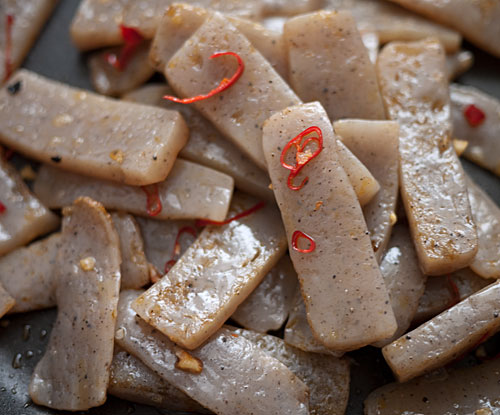
Konnyaku is a wonderful food for anyone on any kind of diet - provided, of course, that you like it. I do like it - it has a very unique chewy-bouncy texture. I have described konnyaku and its noodle-shaped cousin, sharataki, before, but briefly, konnyaku is a grey to white colored, gelatinous mass which basically consists of water and fiber. It has almost no calories. Right out of the package, konnyaku and shirataki have an odd smell, but if you treat it properly (directions given below) you can get rid of that and just have the flavorless yet curiously interesting mass of goo that is going to fill up your belly in a very useful way.
This is something very easy to make in a jiffy. It's basically taking a classic Italian spaghetti recipe and applying it to konnyaku. You could make this with shirataki too, in which case it will actually look like noodles, but I rather prefer the chewier texture of konnyaku. The only thing to watch for if you are on a diet is the amount of olive oil and optional cheese you use.
Filed under:
japanese lighter weightloss vegetarian vegan fusion low-carb
Submitted by maki on 17 September, 2010 - 12:19
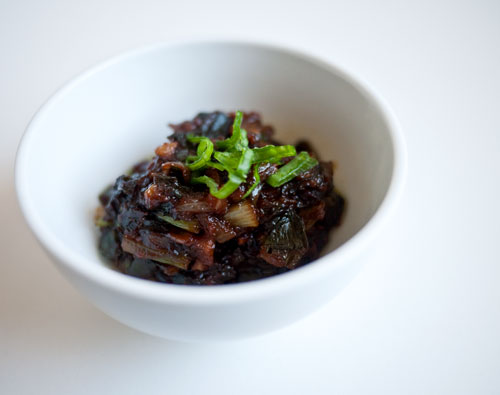
This is one of those really useful and versatile sauces or pastes (the consistency just depends on how long you cook it down to evaporate the moisture) that is so easy to make that it's really barely a recipe. It's a basic standby in Japanese kitchens.
Type:
recipe Filed under:
basics japanese vegetarian miso vegan
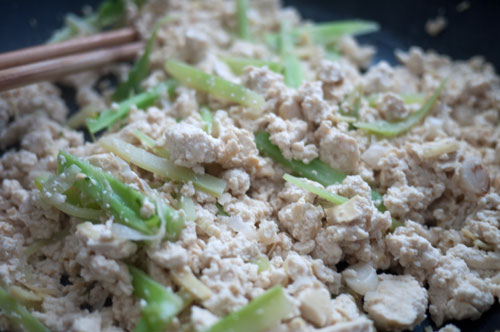
A low-carb, low-key tofu dish that serves as a background element to a meal, serving the role that rice usually plays.
Filed under:
japanese vegetarian vegan low-carb diabetes

Ahh, tomatoes. What temperature is right for them?
Filed under:
japanese vegetarian provence summer france vegan salad low-carb
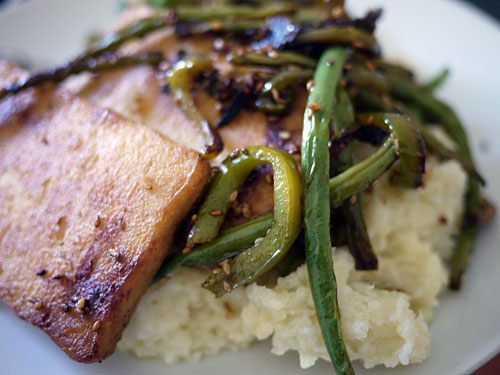
A low-carb, vegan lunch experiment.
Filed under:
vegetarian tofu vegan low-carb diabetes
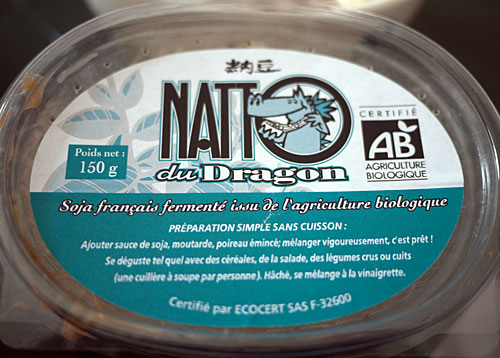
As I slowly settle in to my new life here in France, I'm finding out about quite a lot of interesting local suppliers of the things that I want to eat, wear, sit on, or otherwise use. But I never thought that I'd find this: French natto, as in natto made right here in my region of France!
Filed under:
japanese ingredients natto legumes vegetarian france vegan japan
Submitted by maki on 30 April, 2010 - 09:16

(Periodically I like to dust off an article from the vast Just Hungry archives, give it a little facelift, and present it on the front page again. I wrote this guide to tofu back in September 2008. I think it will answer most, if not all, your questions about Japanese-style tofu and related products. Enjoy!
There are several tofu recipes both here in Just Hungry as well as on Just Bento, and I've even shown you how to make your own tofu from scratch. However, up until now I have never really tried to explain the differences between types of tofu, when to use them and how to store them. Well now is the time to fix that.
Type:
feature Filed under:
japanese ingredients vegetarian tofu vegan
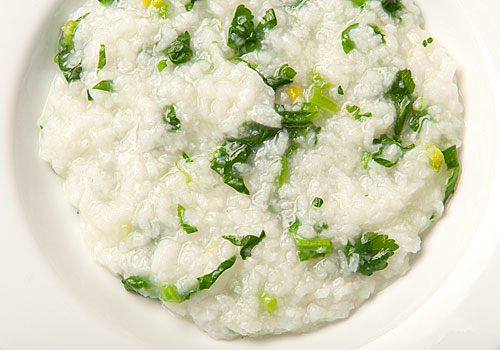
The more I study old Japanese customs, the more I am impressed by the logical thinking behind many of them, even when examined with modern eyes. One of these the custom of partaking of a bowl of nanakusagayu on the seventh day of the New Year, which supposedly started in the Heian Period (around the 12th century), in the refined court of Kyoto. Nanakusa means seven greens, and kayu (or to use the honorific term, okayu (お粥)), is rice porridge. The Imperial Court, now in Tokyo, still has a nanakusagayu ceremony on the morning of January 7th.
Filed under:
japanese lighter rice vegetarian vegan

It's been a cold and snowy winter so far around these parts, which usually means soups and stews for dinner. This classic Japanese soup is hearty yet low in calories, full of fiber, and just all around good for you. It helps to counteract all the cookies and sweets you might be indulging in at this time of year.
The name kenchinjiru (けんちん汁)derives from the Zen Buddhist temple where it was first made (or so it's claimed), Kencho-ji (建長寺)in Kamakura. (Kamakura (鎌倉) was, for a brief while, the capital of Japan in the 12th and 13th centuries. Nowadays it's a major historical tourist attraction, and a fairly easy day trip from central Tokyo.) Since kenchinjiru is a shojin ryouri or temple cuisine dish, the basic version given here is vegan. It's still very filling because of all the high fiber vegetables used. You could make a very satisfying vegan meal just from this soup and some brown rice.
Filed under:
japanese lighter soup winter vegetarian favorites vegan washoku shojin
Pages